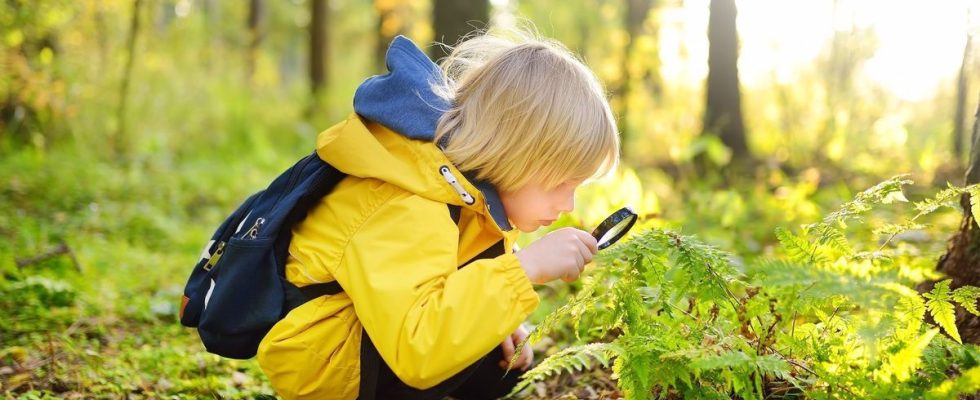Published on
Updated
Reading 2 min.
According to a new study, children who grow up in contact with nature have the advantage of having stronger bones than little city dwellers. A new reason to take them for walks regularly, for their own good!
Throughout their growth, and until adulthood, children build their bone capital with the help of several contributions: genetics of course, but also good nutrition and a suitable living environment. But according to a new study carried out on Belgian children, enjoying a green environment and being in contact with nature also plays an important role in bone density. A good way to avoid fractures andosteoporosis later in life.
Links between greenery and child health established
The study, which reveals this, was carried out on 327 children aged on average 4.6 years, representative of the Belgian population. The parents of each child completed a complete questionnaire on their origin, their environment, their consumption (diet, supplements, dairy products, etc.), their educational environment and even exposure to various elements (to cigarettes, to screens).
Bone mineral density, indicative of bone strength, was assessed using quantitative ultrasound, a radiation-free method suitable for young children.
The study also focused on exposure to residential green spaces, calculated using high-resolution land cover data. The green space around each child’s residence was quantified in different radii, using geographic information system software.
Forests and green spaces are associated with stronger bones
Good news for those who enjoy green spaces close to home: this exposure was positively related to bone mineral density after adjusting for factors such as age, weight, gender, height, ethnicity and the education of the child’s mother.
The strongest link was observed with total green space (with trees, such as a forest) within 500 meters, where a 21.2% increase in green space was associated with an increase of 27 .38 m/s bone mineral density. But even green space within a 1,000 meter radius shows a benefit: a 67% reduced risk of substandard bone mineral density.
In other words, it’s not about living in the middle of the forest to have stronger bones. Regularly walking in a green space near your home with your child is enough to provide them with all the benefits of nature.

